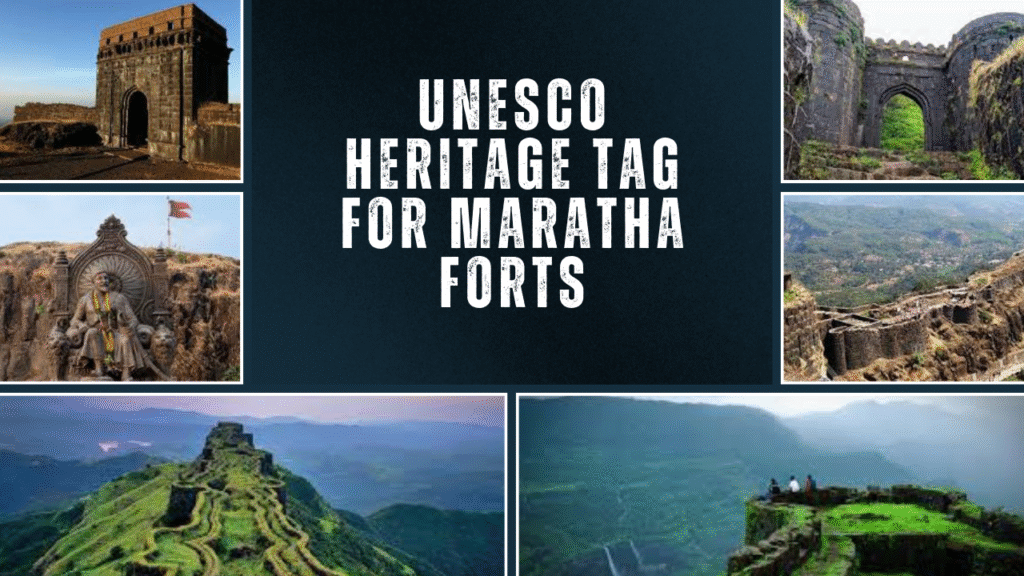
In a historic step towards preserving India’s rich cultural heritage, UNESCO has officially inscribed the ‘Maratha Military Landscapes’ on its prestigious World Heritage List. This move highlights 12 strategically significant Maratha forts, 11 in Maharashtra and one in Tamil Nadu, showcasing the architectural prowess and military genius of the Maratha Empire. This recognition has reignited discussions around Maratha legacy, history, and pride, particularly at a time when Maharashtra approaches crucial local elections.
The listing is not merely a cultural acknowledgment—it is a strategic nod to a region whose historical identity continues to shape contemporary political narratives. These fortresses, once bastions of resistance against foreign invasions, now stand as symbols of cultural resilience and regional pride.
Marathi Granted Classical Language Status: A Long-Awaited Recognition
In early 2024, the Government of India conferred ‘Classical Language’ status upon Marathi, a milestone long pursued by cultural scholars and linguistic activists. Marathi now joins the elite list alongside Sanskrit, Tamil, Telugu, Kannada, Malayalam, and Odia, fulfilling a decades-old aspiration of Maharashtra’s intellectual and cultural community.
This acknowledgment isn’t just ceremonial. Classical status entails significant financial support for research, translation, and preservation, and positions Marathi at the center of national and international academic discourse. For a language rooted in thousands of years of literary and oral tradition, this recognition marks a defining moment in history.
Strategic Cultural Moves Shape Maharashtra’s Political Landscape
These twin recognitions—UNESCO heritage status for Maratha forts and classical status for Marathi—are not isolated incidents. Together, they represent a calibrated strategy by the ruling government to appeal to Marathi identity and cultural nationalism, especially amid rising political competition in the state.
Prime Minister Narendra Modi, while lauding the UNESCO decision, emphasized the valor and visionary governance of the Maratha Empire, calling it a source of national pride. He also urged citizens to visit the forts to reconnect with the country’s storied past.
Simultaneously, the symbolic redesign of the Indian Navy’s ensign in 2022, dropping the colonial-era St. George’s Cross in favor of a Chhatrapati Shivaji-inspired design, further reinforced the cultural narrative. The government is weaving Maratha imagery and pride into the national fabric, projecting an image of revivalist patriotism fused with regional honor.
Cultural Nationalism and Voter Sentiment: A Tactical Alignment
The Bharatiya Janata Party (BJP), historically a minor force in Maharashtra’s regional political ecosystem, has reoriented its approach. By embracing Maratha symbols and linguistic pride, the BJP aims to penetrate urban and semi-urban Marathi voter blocs that have traditionally aligned with the Shiv Sena, Nationalist Congress Party (NCP), and Congress.
These developments are seen as key to shaping voter sentiment, especially in civic polls and upcoming state assembly elections. The party’s cultural outreach appears designed to redefine political affiliations, leveraging heritage and emotion in place of caste arithmetic and regional alliances.
List of the 12 Maratha Forts Recognized by UNESCO
Each fort encapsulates a distinct aspect of Maratha military architecture and strategic geography:
-
Raigad Fort – The capital of the Maratha Empire under Chhatrapati Shivaji Maharaj.
-
Rajgad Fort – Known for its unique design and historic importance.
-
Torna Fort – The first fort captured by Shivaji.
-
Sinhagad Fort – A testament to Maratha valor during the battle against the Mughals.
-
Pratapgad Fort – Site of the iconic battle against Afzal Khan.
-
Lohagad Fort – Architectural marvel surrounded by lush Sahyadri hills.
-
Visapur Fort – Adjacent to Lohagad, forming a twin defense complex.
-
Sindhudurg Fort – Built on the Arabian Sea, showcasing Maratha naval power.
-
Vasota Fort – Deep within forests, known for its strategic obscurity.
-
Janjira Fort (Murud) – A rare fort never conquered despite numerous attacks.
-
Shivneri Fort – Birthplace of Shivaji Maharaj.
-
Gingee Fort (Tamil Nadu) – Maratha control over Southern India’s military passages.
Why UNESCO Recognition Matters Beyond Politics
While political undercurrents are strong, the UNESCO tag also brings tangible benefits to the sites and surrounding communities. These include:
-
Increased global tourism, especially from heritage enthusiasts and history scholars.
-
Enhanced funding for preservation and archaeological research.
-
Job creation and infrastructure development in tourism-linked services.
-
Greater academic interest in Maratha history and military strategies.
It also encourages young Maharashtrians to explore their cultural identity and connect with their roots, potentially fostering a new generation of heritage custodians.
The Role of Language in Cultural Sovereignty
Marathi’s new classical status transforms it from a regional language to a national linguistic treasure. It underscores the depth of Marathi literature, ranging from Bhakti movement poets like Dnyaneshwar and Tukaram to modern literary giants like P.L. Deshpande, V.S. Khandekar, and Vijay Tendulkar.
Universities and cultural institutions can now receive dedicated funding for translation projects, ancient manuscript digitization, and global outreach programs. The inclusion of Marathi in national and international linguistic discourse elevates the language’s prestige and ensures its preservation in the digital age.
Conclusion: Pride as a Political and Cultural Currency
The recognition of Maratha military sites by UNESCO and the grant of classical language status to Marathi have emerged as more than cultural gestures—they are instruments of identity politics and heritage preservation.
As Maharashtra heads into key local and state-level elections, these developments will continue to shape electoral narratives, regional consciousness, and national cultural discourse. For millions of Maharashtrians, they offer a moment to celebrate their history, and for political strategists, a powerful lever to influence public sentiment.